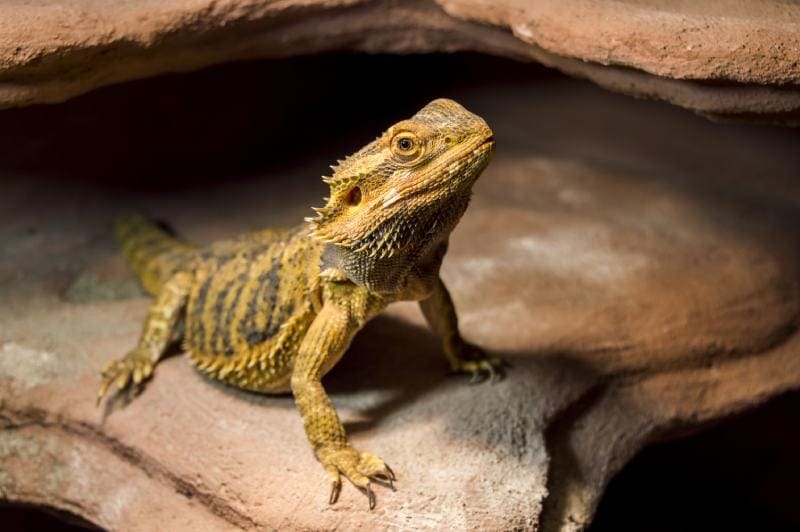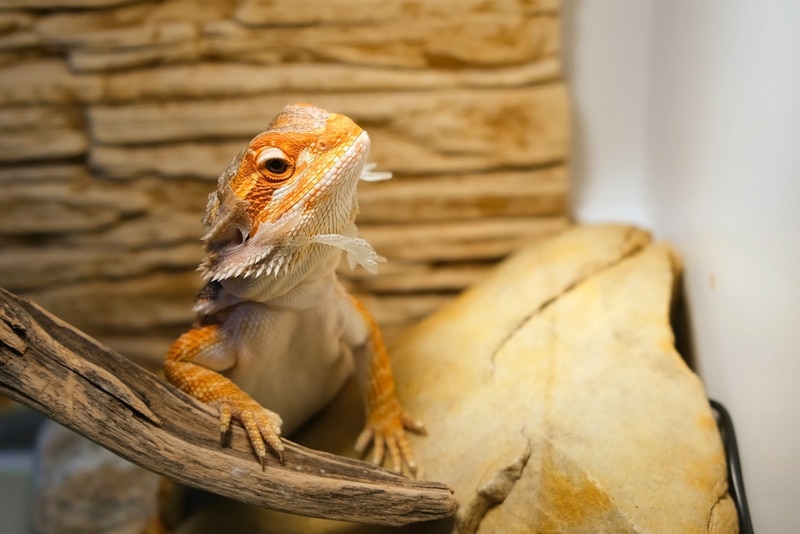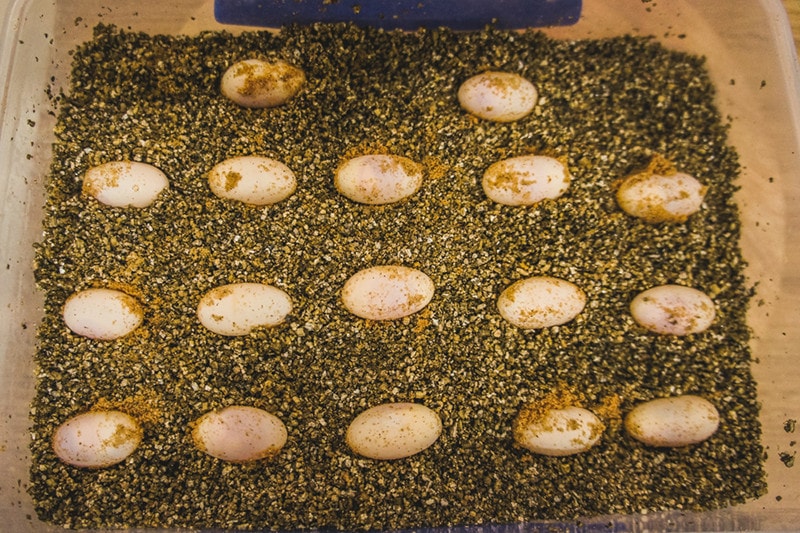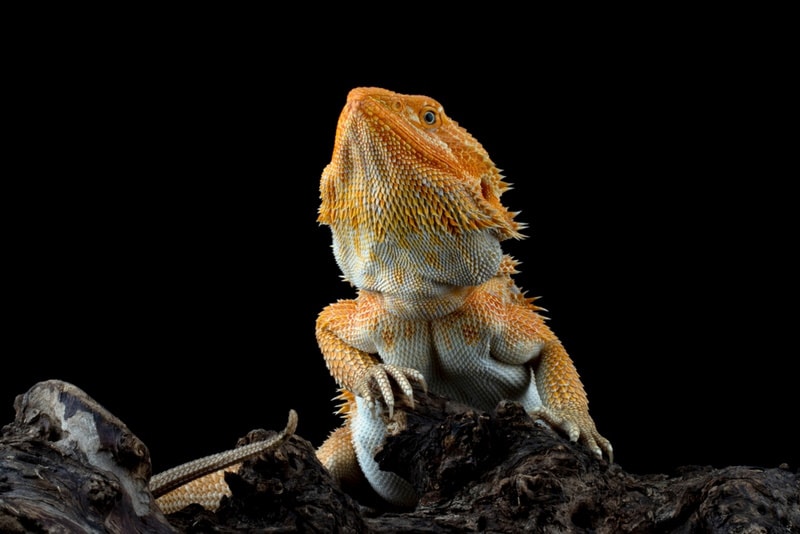What Type of Lights Do Bearded Dragons Need? Vet Reviewed Facts & FAQ
Updated on

If you’re interested in buying a Bearded Dragon or you already have one, you need to set up a proper enclosure. The correct lighting is a very important part of keeping your Beardie happy and healthy as pet Bearded Dragons generally rely on artificial lighting to simulate sunlight. The enclosure needs a source of UVA rays, UVB rays, visible light and heat from a basking lamp.
Read on below to find out more.
Exactly What Kind of Light is Needed?
Bearded Dragons need a certain spectrum of ultraviolet light called UVB. When they don’t have access to bright sunlight ( as they would in the wild) then special lights are needed to provide the UVB light. This is because UVB is necessary for them to make vitamin D. Vitamin D is responsible for how well your Bearded Dragon’s body is able to absorb and use calcium. When they don’t make enough vitamin D, their calcium levels will drop and this can result in bone problems and other metabolic disorders. UV lights do not penetrate glass windows.
Bearded dragons can see part of UV light, UVA , which is essential for their color vision. Many UV bulbs will provide UVA and UVB.
Bearded Dragons are reptiles and so are ‘ectothermic’, meaning they use their environment to warm up and cool down. They need light to be able to detect heat. Heat or basking lamps are used to create more heat in certain areas of the enclosure and a temperature gradient within their cage.

Light Setup
The enclosure should have a gradient from light to shade to try and emulate their environment in the wild. The light source should overlap with the basking area, while the cool end of the enclosure will be more shaded. Some points to note when setting up the lights:
- All lights must be inaccessible to your Bearded Dragon and guarded to prevent burns or injuries.
- Carefully follow the manufacturer’s guidelines for the UVB light regarding positioning and distance from you Beardie. You must not have glass between the UV light and your Beardie.
- UVB output reduces over time so lights must always be replaced according to manufacturer’s guidelines.
- A thermostat must be used with all heat lamps and digital thermometers need to be monitored daily in different parts of the cage.
- Turn off all lights at night. Lamps can be controlled using a simple plug in timer- on for 12 hours in the day and off for 12 hours at night.
Temperature
A Bearded Dragon needs to be able to move around its enclosure to regulate its body temperature. The basking zone should be around 38-42 degrees Celsuis and the cool end between 22 and 26 degrees Celsius. Generally a 60- 100 watt bulb provides the heat, which should be at one end of the enclosure pointing downwards.
Bearded Dragons should be provided with a natural stone in the basking area to give access to the heat. Follow the instructions for setting up the basking lamp, but generally their backs should not get closer than 10-11 inches from the heat lamp. The exact height , mount and your rooms’s average temperature will all affect the temperature of the enclosure. It’s important to have multiple thermometers in different parts of the enclosure and to record and monitor temperatures daily.
Conclusion
The lighting setup for your Beardie should try to replicate their natural environment in the wild as closely as possible. Indoors this means a UV light source for both UVA and UVB light. In addition, they need heat usually from a basking lamp, as they normally rely on the sun’s heat to regulate their body temperature.
Featured Image Credit: Robert Keresztes, Shutterstock













